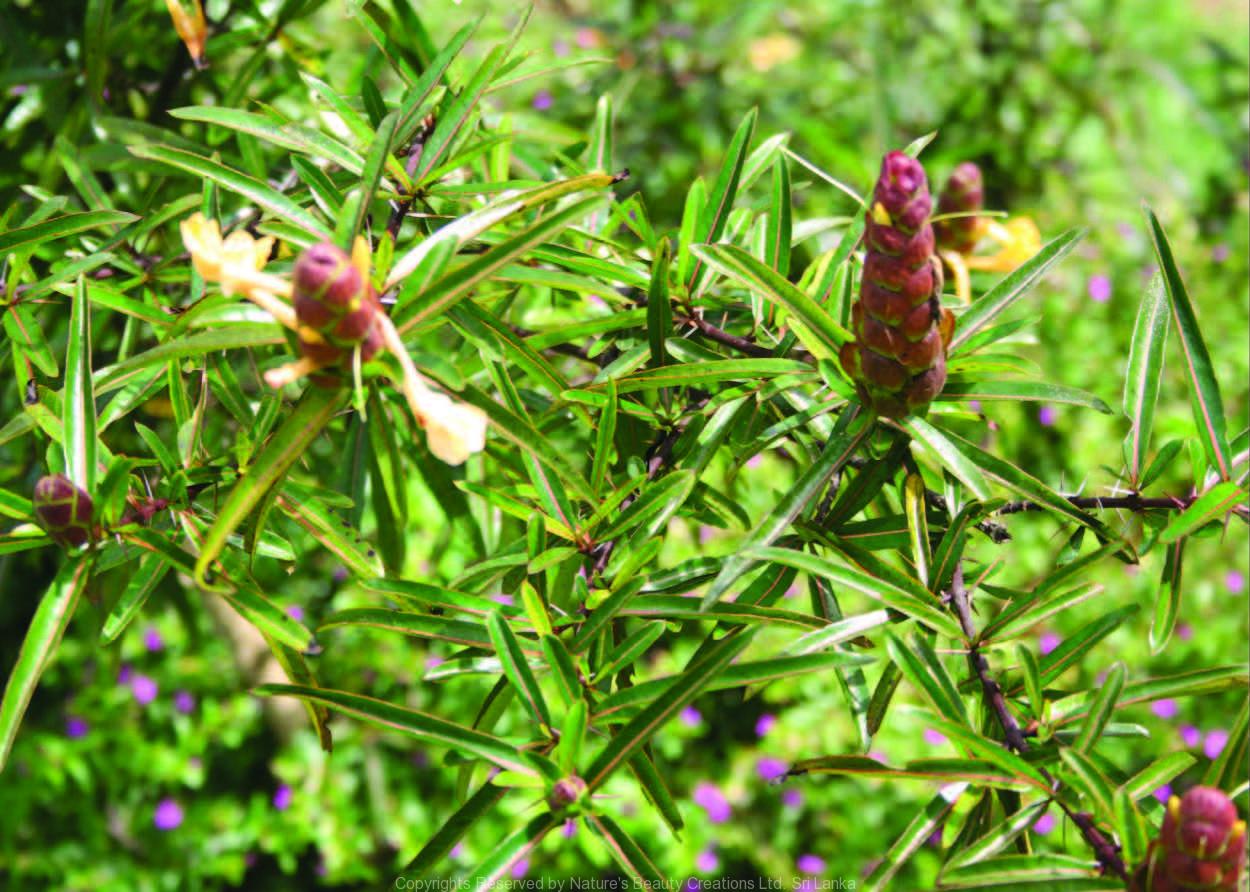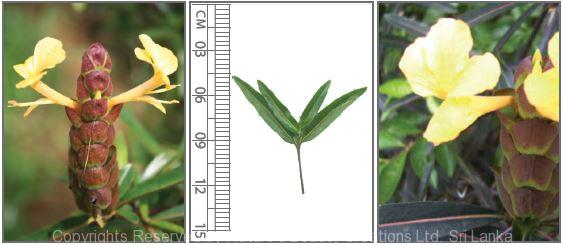

Traditional Knowledge
Useful plant parts :
Leaf, young shoot and root
Uses in traditional medicine :
- Roots are used for centipede and insect bites and are anti-inflammatory
- Young shoots with leaves are ground and applied for skin diseases
- Leaves are used to treat herpes simplex
Scientific Research
Chemical constituents:
lridoid glucosides: lupulinoside, acetylbarlerin, ipolamiidoside, barlerin, shanzhiside and its derivatives, saletpangponosides A-C, mussaenosidic acid and its derivatives from flowers and aerial parts
Bioactivity :
Methanol extract of aerial parts: antihyperglycaemic, antiacne, antioxidative, anti-inflammatory, analgaesic, antiperoxidative and protection against gastric and duodenal ulcers
Clinical:
References : Chomnawang, M. T. et al., (2005), Antimicrobial effects of Thai medicinal plants against acne-inducing bacteria, Ethnopharmacological communication, 1, 1-4. Kanchanapoom, T. et al., (2001), Iridoid glucosides from Barleria lupulina, Phytochemistry, 58(2), 337-41. Suba, V. et al., (2004), Anti-diabetic potential of Barleria lupulina extract in rats, Phytomedicine, 11(2-3), 202-5. Suba, V. et al., (2004), Antiulcer activity of methanol fraction of Barleria lupulina Lindl. in animal models, Phytotherapy Research, 18(11), 925-929 Suba, V. et al., (2005), Antiinflammatory, analgesic and antiperoxidative efficacy of Barleria lupulina Lindl. Extract, Phytother Res, 19(8), 695-9. Suksamrarn, S. et al., (2003), Iridoid glucosides from the flowers of Barleria lupulina, Planta Med, 69(9), 877-9. Wanikiat, P. et al., (2008), The anti-inflammatory effects and the inhibition of neutrophil responsiveness by Barleria luplina and Clinacan- thus nutansextracts, Journal of Ethnopharmacology, 116(2), 234-244.
Copyrights Reserved By
Natures Beauty Creations




